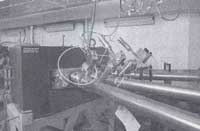Speeding up in the fast lane
 WITH THE commissioning of India's largest particle accelerator -- a machine that propels sub-atomic particles to high speeds -- at the Nuclear Science Centre (NSC) in New Delhi, research groups from all over the country now have access to state-of-the-art facilities for experiments in nuclear physics, material sciences and biophysics.
WITH THE commissioning of India's largest particle accelerator -- a machine that propels sub-atomic particles to high speeds -- at the Nuclear Science Centre (NSC) in New Delhi, research groups from all over the country now have access to state-of-the-art facilities for experiments in nuclear physics, material sciences and biophysics.
The accelerator was completed in December 1990 and the first experiments began in July 1991 after an intensive process of testing and tuning. Says NSC director G K Mehta, "Our aim is to make Indian research efforts in nuclear science internationally competitive."
Upgrading capacity The most powerful accelerator in the country prior to the NSC facility was at the Tata Institute of Fundamental Research in Bombay. Mehta admits the NSC accelerator does not have the capacity of the best accelerators in the world. But he points out, "We are in the midst of a programme to upgrade the capacity of the accelerator."
NSC is an inter-university facility. Groups wanting to use the accelerator submit a project proposal and are assigned beam time. Scientists and students from more than 50 universities, colleges and research institutes are currently conducting experiments at the centre.
The beam of highly energetic ions obtained from the accelerator is split up into various channels and can be made to fall on targets made of different materials, depending on the experiment to be performed. Several elaborate detectors required to record the particles produced when the beam strikes a target were designed and built by NSC scientists in collaboration with faculty members of various Indian universities. The sophisticated detectors include a Gamma Detector Array and a Heavy Ion Reaction Analyser.
"Both these detectors set a landmark in the development of nuclear science techniques in India" says Swapan Dutta, a physicist at NSC.
The accelerator can be used for a wide range of experiments. In nuclear physics, it is used to study the properties of nuclei in their excited states and the nature of the transitions that they make. Within material sciences, some groups are experimenting with techniques to modify the properties of materials, such as hardness, by exposing them to radiation.
NSC also plans to interact closely with industry to develop technologies that are relevant for their needs. One example is a thin layer activation technique, developed by the Indian Institute of Technology in Bombay, to detect corrosion in metal parts. The technique enables metal components like ball bearings to be subject to radiation so that their corrosion can be monitored. This helps in determining the lifetime of the part.
